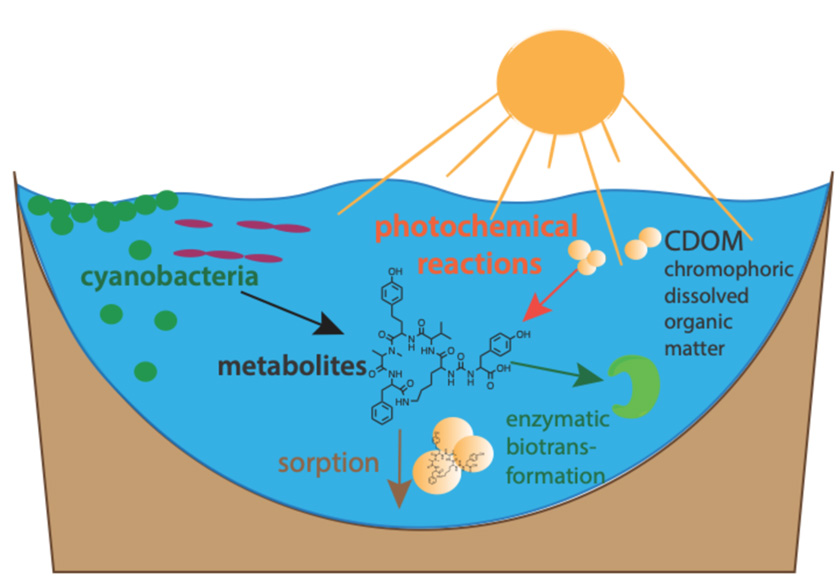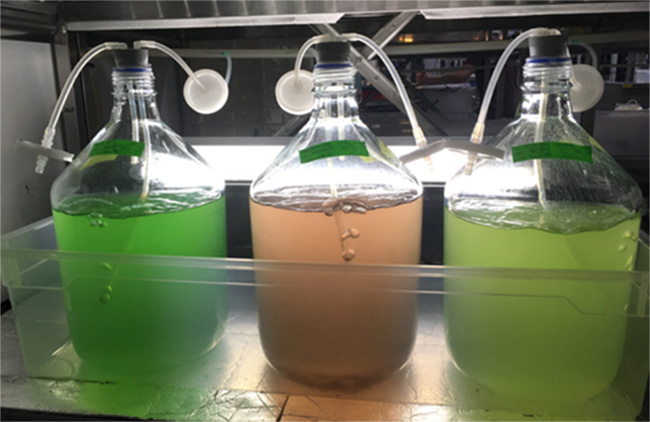Department Environmental Chemistry
Natural Toxins
Our ecosystems and drinking water resources are not only vulnerable towards anthropogenic pollutants. Natural toxins present an additional threat for which we still lack comprehensive risk assessment and management plans. Among the natural toxins from various kingdoms, those produced by aquatic organisms, such as cyanobacteria have a direct entry into our water resources.

Cyanobacterial bloom events conquered freshwater resources across the globe, yet the potential risk of many cyanobacterial metabolites remains mostly unknown. Only microcystins, one class of cyanopeptides, have been studied intensively and the wealth of evidence regarding exposure concentrations and toxicity led to their inclusion in water quality guidelines. However, cyanobacteria produce an large diversity of cyanopeptides beyond the class of microcystins. The question arises, whether the other cyanopeptides are in fact of no human and ecological concern or whether these compounds merely received (too) little attention thus far.

We focus specifically on:
- advancement of analytical workflows to identify and quantify emerging toxins and bioactive metabolites
- co-production dynamics of toxins and metabolites by bloom-forming cyanobacteria
- environmental fate processes of toxins in surface waters and engineered systems
- adverse lethal and sublethal effects towards aquatic organisms
More information on current projects:

